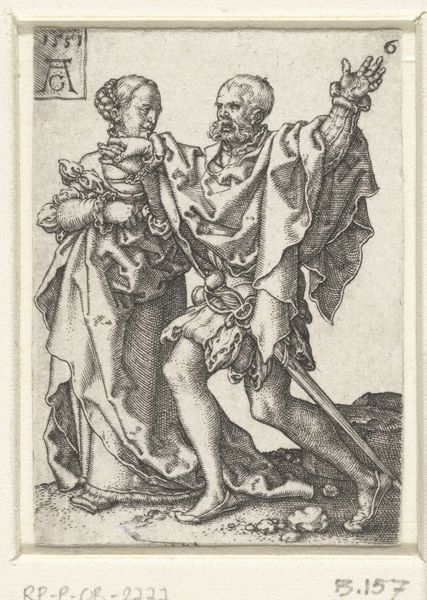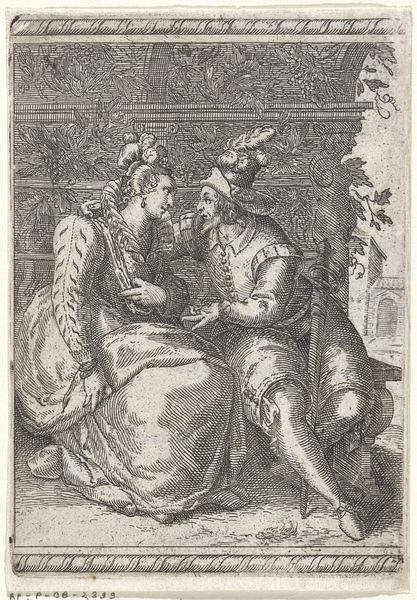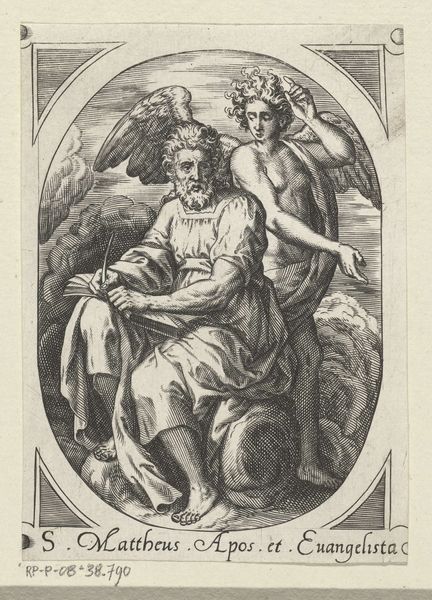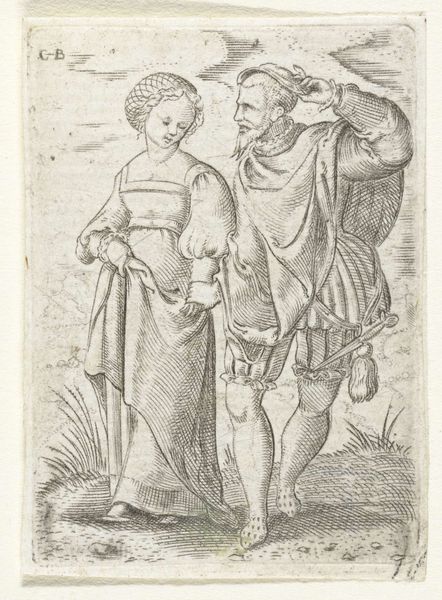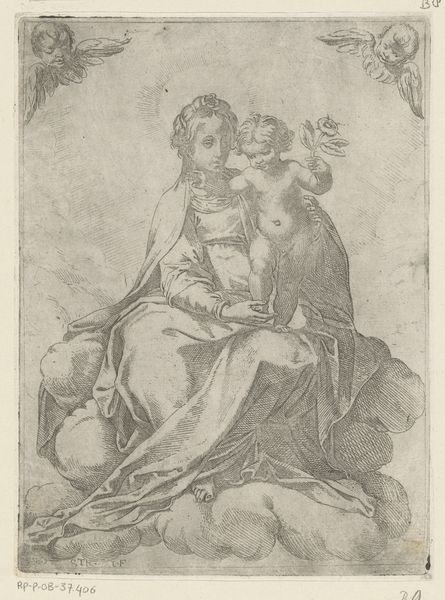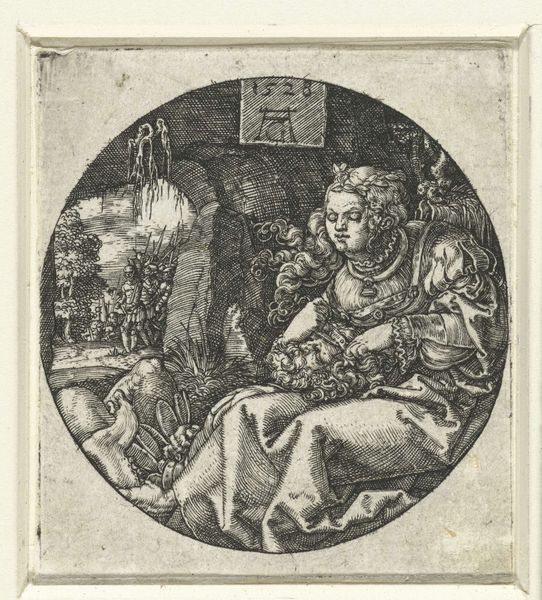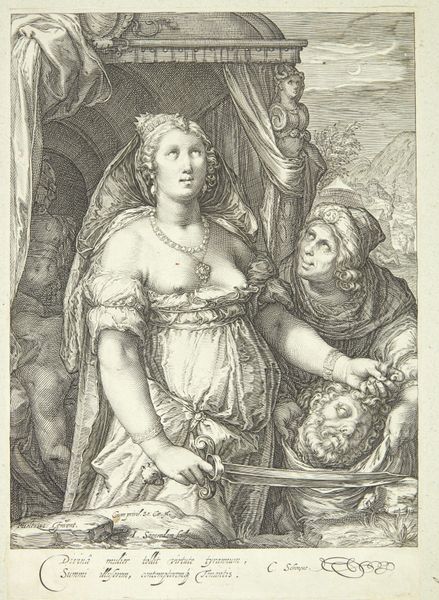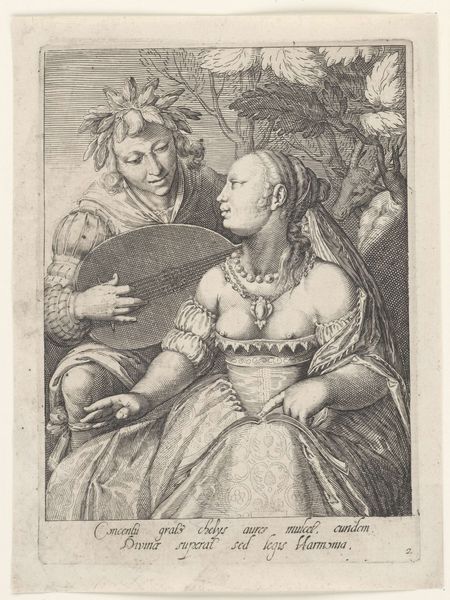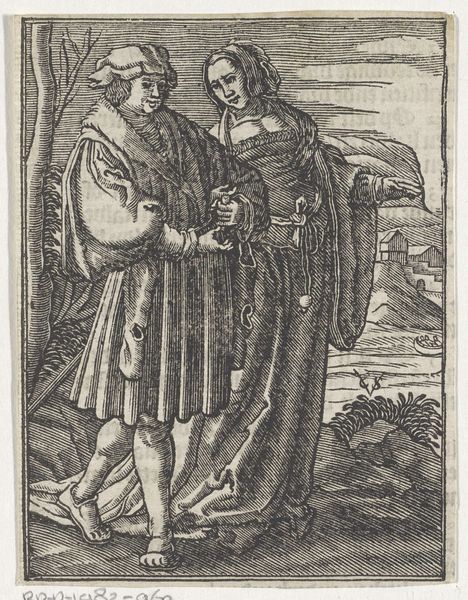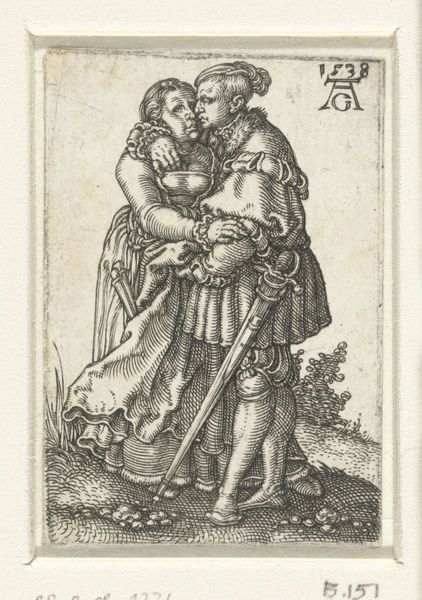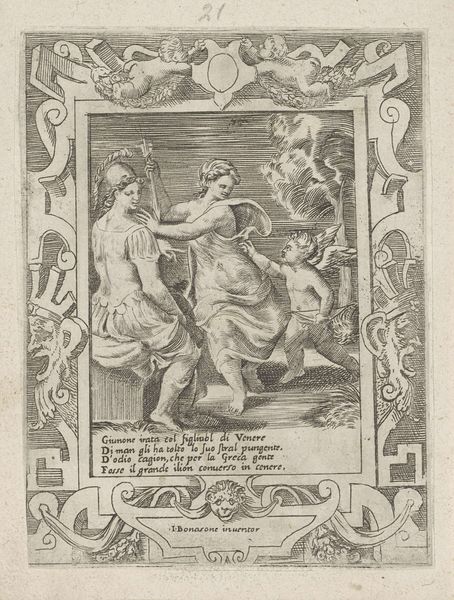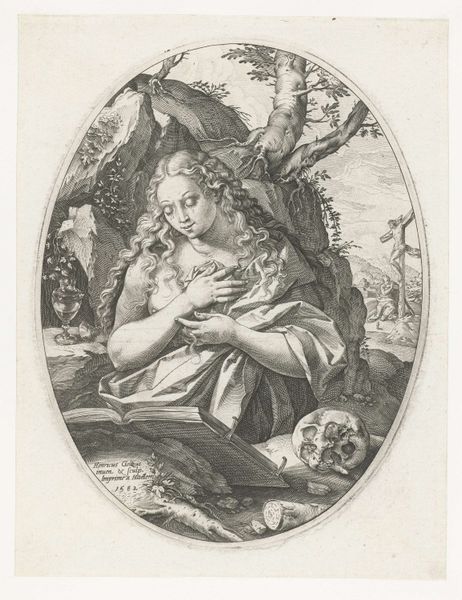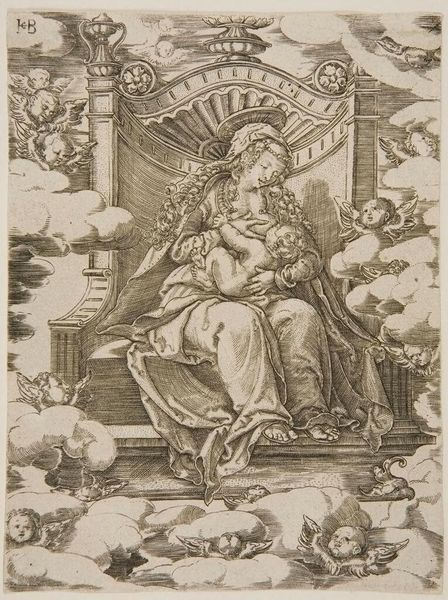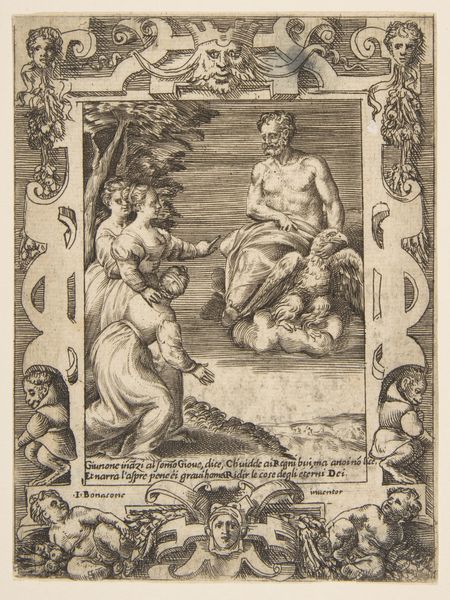
print, engraving
#
portrait
#
pen drawing
# print
#
figuration
#
11_renaissance
#
genre-painting
#
northern-renaissance
#
engraving
Copyright: Rijks Museum: Open Domain
Curator: This delicate engraving, “Liefdespaar gezeten op een bank”, or "Couple seated on a bench", was created in 1529 by Heinrich Aldegrever. It’s currently held here at the Rijksmuseum. What's your initial take on this piece? Editor: There's a certain restraint in the scene, despite all the ornate details. The figures appear stiff, almost burdened by their garments and surroundings. I wonder about the social dynamics implied. Curator: Absolutely. Considering the period, the attire signals clear socio-economic standing, immediately bringing issues of class and gender to the forefront. The woman, though adorned, possesses a somewhat resigned gaze, a common visual strategy for depicting women within a patriarchal framework. Editor: Precisely! It’s fascinating to examine the craftsmanship. Look at the intricate lines creating textures of their clothes! The labor involved in producing such detail from a relatively small copper plate, intended for mass reproduction as prints, is noteworthy. Were these prints circulated among similar classes or intended to illustrate morals to the lower classes? Curator: Both, potentially. Prints like these served multiple functions. They provided aspirational images to lower classes and reinforced social order among the elite. And the objects surrounding them, such as the vessel that could contain drink and other finery, denote luxury and prosperity, underlining their status. Also, how do those items serve in gendered relation with the figures and what meaning can that produce for contemporary considerations? Editor: It’s all deliberately displayed wealth. The texture suggests these things were either produced using very fine or expensive tools. Consider the mining and the metalworking needed, also, to produce not only the original plate but also all these props. Curator: By focusing on such material aspects, you’re emphasizing the political economy interwoven into the seemingly intimate depiction of the couple. In a way, Aldegrever reveals how deeply intertwined displays of love, affection, and domesticity are connected to broader political and economic systems. Editor: The material conditions speak to an audience, of wealth, power, or both! How did these printed works dictate tastes? What labor went into producing the plate itself? The relationship of maker to product is interesting. Curator: So, thinking of all this labor then gives me new perspective on its message: this wasn’t a simple declaration of love; rather, a complex illustration of power dynamics, social class, gender roles, and, perhaps, even an insight into anxieties about marriage and legacy. Editor: Definitely. Now I am really wondering about how it got here!
Comments
No comments
Be the first to comment and join the conversation on the ultimate creative platform.
